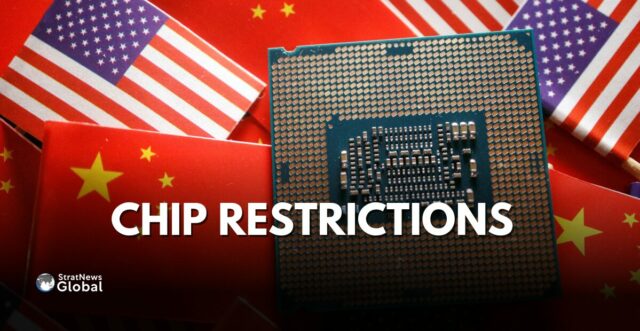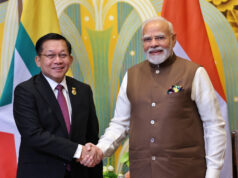A U.S. official is visiting Japan after discussions with the Dutch government to persuade allies to further restrict China’s ability to produce advanced semiconductors. This move builds on a 2023 agreement aimed at preventing chip making equipment from reaching China, which could potentially enhance its military capabilities.
U.S. Efforts and International Reactions
Alan Estevez, the U.S. export policy chief, is leading this diplomatic effort. His goal is to ensure that allies maintain and expand the restrictions on exporting advanced chip making equipment to China. These restrictions were first imposed by the U.S. in 2022 and targeted companies like Nvidia and Lam Research.
China has strongly opposed these actions. Chinese foreign ministry spokesperson Lin Jian condemned the U.S. for “coercing other countries and suppressing China’s semiconductor industry.” Lin warned that such behaviour hinders global semiconductor development and will ultimately have negative repercussions.
Japan and Netherlands’ Roles
Japan’s industry ministry acknowledged ongoing interactions with the U.S. but refrained from commenting on specific diplomatic exchanges. Japan, home to major chip equipment manufacturers such as Nikon and Tokyo Electron, has already curbed exports of 23 types of chip making equipment in alignment with U.S. policy.
Similarly, the Netherlands has taken steps to regulate the export of advanced semiconductor equipment from ASML, the world’s largest chip equipment maker. This includes restrictions on deep ultraviolet (DUV) semiconductor equipment to China, which are crucial for producing advanced chips.
Expanding Restrictions
Washington is currently in discussions with allies about adding 11 more Chinese chip making factories to a restricted list, which already includes five factories such as SMIC, China’s largest chipmaker. The U.S. also aims to control additional types of chipmaking equipment.
Despite these efforts, there are challenges. U.S. officials have tried to prevent ASML from servicing certain equipment in China, but existing contracts remain in place. ASML expects to continue servicing most of the equipment sold to China, though it cannot use U.S. spare parts due to restrictions.
Technological Developments in China
Despite the international restrictions, China has demonstrated resilience. For instance, last year, Huawei launched the Mate 60 Pro smartphone, powered by a sophisticated chip. This development is seen as a symbol of China’s technological progress despite Washington’s efforts to limit its access to advanced technologies.
Conclusion
The U.S. continues to push for stricter controls on China’s access to advanced semiconductor technology, working closely with allies like Japan and the Netherlands. While these efforts face resistance and challenges, they reflect the ongoing strategic competition between the U.S. and China in the high-tech sector.
With Inputs from Reuters
Research Associate at StratNewsGlobal, A keen observer of #China and Foreign Affairs. Writer, Weibo Trends, Analyst.
Twitter: @resham_sng





